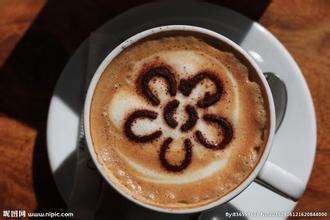Introduction to the taste treatment method of flavor description in Ethiopian coffee origin and producing area
Introduction to the taste treatment method of flavor description in Ethiopian coffee origin and producing area
A coffee tree usually grows for about three to four years before it begins to bear fruit. the fruit is a red berry and a small number of yellow berries. After drying and removing the pulp, the coffee beans can be separated.
There are shadows of coffee beans all over the world, and they can grow as usual as long as the climate is right. These suitable places for growing coffee beans are located between the Tropic of Cancer and the Tropic of Cancer, generally between 25 degrees north latitude and 30 degrees south latitude, covering most countries in Central Africa, East Africa, Middle East, India, South Asia, the Pacific, Latin America and the Caribbean, collectively referred to as the "coffee growth belt". Coffee production zone coffee is mainly concentrated in this area, because coffee is very vulnerable to frost, and the temperature and humidity in the tropics are the most suitable for coffee growth. Coffee beans will grow into different species depending on farming methods, regional climate and various factors.
The Buna ceremony in Ethiopia is a long process, with an average of about 1.5 hours. The ceremony, which takes place every day, aims to come to the conclusion that it may be a marriage proposal or a mediation of family conflict.
The first is roasted coffee beans. When the coffee beans are roasted, the women (often dressed up) put the coffee beans into the pot and let everyone smell the coffee beans. And then I started making coffee.
The first cup in the ceremony is called ABOL, which is the most important and the worst. If you are resolving a conflict, you must bravely drink this drink and state your point of view.
The second cup is called Tona, boiled again with water, and the taste is still strong. If the other person accepts his or her own point of view, he will drink it up. If the other party doesn't drink, there won't be a third drink.
The third cup is called Baraka, when the matter is settled and the conclusion is satisfactory, it symbolizes joy, and often the younger generation will be invited to this cup.
The legend of the shepherd originated from the Lebanese linguist Fast Nelloni, who recorded in his 1671 book the Sleepless Monastery: in the 6th century AD, in the Kaffa region of the Ethiopian Plateau of Africa, a shepherd named Kadi went to the new prairie to graze, and suddenly found the sheep jumping and excited, so he could not sleep even at night, so he ran to the Abyssinia Monastery for help. After the investigation of the abbot and monks, it was found that the goat was particularly excited after eating the red fruit on the bushes, so it was picked back and boiled into soup to drink, and sure enough, it could not sleep all night. So the dean distributed the soup to the monks who dozed off in the evening service, and the effect was excellent, and this refreshing medicine spread. This is the origin of "coffee".

Important Notice :
前街咖啡 FrontStreet Coffee has moved to new addredd:
FrontStreet Coffee Address: 315,Donghua East Road,GuangZhou
Tel:020 38364473
- Prev

Description of taste and flavor of Brazilian Hilado coffee beans introduction of grinding scale varieties
Description of the taste and flavor of Brazilian Hillado coffee beans the variety of grinding scale introduces the aroma of Brazilian high-quality coffee (Brazil Top Cerrado): fragrant temperature and softness, giving people an elegant impression on the whole. Taste: like aroma, the taste of Brazilian coffee is mild and elegant, low acidity coffee, smooth and balanced taste. Brazil's largest coffee in the world
- Next

Treatment of raw coffee beans-there are several ways to treat coffee fruits
Coffee raw bean treatment-there are several treatment methods for coffee fruit. The basic principle is to squeeze out the soft ripe fruit of the seed by means of extrusion. The peeling machine needs to adjust the gap between the extrusion gap to avoid crushing the seed and destroying the endocarp. It causes the infection of microorganisms in the follow-up process, which makes the coffee beans have a peculiar smell, but do not leave too much pulp. This part can be rotated by the peeling machine.
Related
- Detailed explanation of Jadeite planting Land in Panamanian Jadeite Manor introduction to the grading system of Jadeite competitive bidding, Red bid, Green bid and Rose Summer
- Story of Coffee planting in Brenka region of Costa Rica Stonehenge Manor anaerobic heavy honey treatment of flavor mouth
- What's on the barrel of Blue Mountain Coffee beans?
- Can American coffee also pull flowers? How to use hot American style to pull out a good-looking pattern?
- Can you make a cold extract with coffee beans? What is the right proportion for cold-extracted coffee formula?
- Indonesian PWN Gold Mandrine Coffee Origin Features Flavor How to Chong? Mandolin coffee is American.
- A brief introduction to the flavor characteristics of Brazilian yellow bourbon coffee beans
- What is the effect of different water quality on the flavor of cold-extracted coffee? What kind of water is best for brewing coffee?
- Why do you think of Rose Summer whenever you mention Panamanian coffee?
- Introduction to the characteristics of authentic blue mountain coffee bean producing areas? What is the CIB Coffee Authority in Jamaica?

